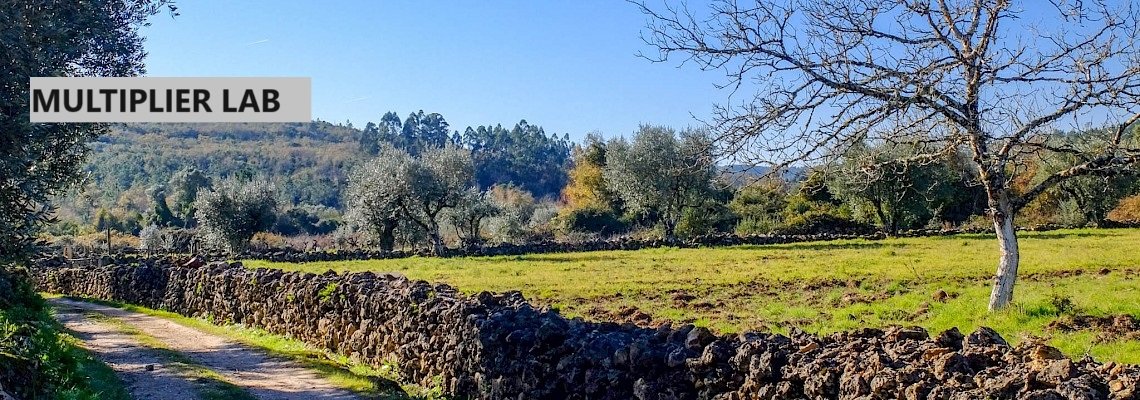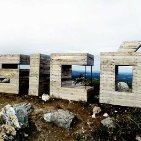Living Lab: Innovation action plan
1. CRFS vision 2030 and challenge statements
Region. Located in the centre of Portugal, the region of Terras de Sicó covers six municipalities around the Serra de Sicó massif, which divides the river basins of Nabão and Soure. It aggregates the relevant wine subregion of Beiras and must follow the production technologies and traditional oenological practices, as well as those legally authorised. The wine production in this region goes up to the Roman empire, with soils of clay-calcareous origin, with different nuances with small outcrops of schist, populating the green of the sunny slopes with a climate of cold, wet winters and hot, dry summers.
Vision. The vision for the region is to become a sustainable wine producer region that must solve issues related with rurality, eldrey population, and the implication of climate change on the production. No formal CRF such a vision covers the complete value chain: producers, associations, distribution, sellers and consumers. The region of Sicó covers an area of roughly 1.500 km2 with an occupation of 75,03 hab./km2. One quarter of the population presents more than 25% while 75% have more than 25 years, while the vineyards are very small (less than 10 ha), family-type producers.
Challenge. The Cities2030 project will focus on the sustainability of wine production, propose a CRFS that might help minimise rurality to fixing populations, and to provide new tools that might help such an endeavour. From a technological point of view, new tools must be developed to help producers and associations to forecast wine production, anticipating the stock for the distribution and commercialization. These tools will help the players to have a decision support tailored for their needs, becoming sustainable, reducing waste by circular economy and the impact of climate change in the vineyards.
2. Collaboration with stakeholders
To deploy a tentative CRFS and become sustainable, all value chains must be gathered. Major stakes are the low education of producers (mostly empirical knowledge) and lack of digitalization. In this particular case, the association of producers will have a relevant role in promoting the digitalization and creating the connection with distribution and stores. Municipalities and parishes will be of relevance for the social area (demography, new policies to attract and maintain population, producers). Distribution, sales and fairs will play a relevant role in the promotion and sustainability of the CRFS.
3. Living Lab resources
Most of the Living Lab experiments will require data collection. Multi-property data that is available at satellite imagery levels and ground weather stations will be employed. Additional data (quality) may be obtained from producers and associations. Local visits to vineyards will be accomplished with the associations. Computational cloud computing time and frontend development will also be needed and provided by PRIM. Additional funding may be obtained through special calls of national funds.
4. Living Lab experiments
1. Compile empirical data. Collect information regarding crops for a better understanding of the particularities of the wine production in Sicó, contributing to “Develop food culture and skills” - “Production” and “Processing”. Collecting (M30-M32), Interpretation (M33-34).
2. Understand the ecosystem of Sico. Gather Earth Observation data with major variables, contributing to “Protect and Preserve Natural Resources” – “Production” and “Ecosystem services”. Collecting (M28-M32), Interpretation (M33), Implementation of data (M35-38).
3. Data analysis of wine production. Use gathered data to forecast time and scale of production, becoming a tool to maximise production and waste minimization contributing to “Secure healthy and sustainable food” – “Production” and “Waste”. Collecting (M40), Interpretation (M41), Implementation of data (M41-42), Iterate (M43 & M46).
4. Can local production attract new people? Analyse with associations and municipalities the impact of the production in demography, contributing to “Stop poverty and insecurity” – “Inclusion equity” and “Livewood groth”. Meetings (M33), Multi-actor problem solving events (M40), Iterate (M42 & M43).
5. How to improve commercialization of sustainable wine? Analyse with associations and sellers how to cope with the limited production and reach the market. Can it be a win-win solution to sell local products together? Can the wine production residuals be used for other areas? Contribute to “Enhanced circularity and local food belts”. Meetings (M34), Multi-actor problem solving events (M35), Iterate (M40 & M45).
5. Other Living Lab's measures
Beside the data production that may be used for the wine producers, it is also of relevant policy and social innovation actions. For that, meetings with (inter)municipalities, eldery and mentally-ill associations, to promote innovation and to be employed in other areas beside wine production. Extent to national, European and countries that have Portuguese as their national language is also relevant.
6. SMART Goals
- One association having access to data digested to improve crops.
- 4 Living Lab workshops & players meetings.
- One scientific article focusing on climate change and Sico Region production.
- Best practices document for product cross-selling and sustainability.
- Validation of the data oriented platform with one producer.
- Involve one startup in the use of wine waste for a circular economy.
- Contact 1 incubator for ideation of circular economy for local producers.
7. Communication, dissemination and exploitation
The results of the Living Lab will be provided to the stakeholders on a monthly basis. The strategy will focus on meetings with associations and their members. For other partners of the value of chain, the communication will be trimestral also at one-to-one meeting. The data that may be released openly will be oriented with a marketing strategy for social media. The participation in trade shows (technologically and wine producers fairs) will also be envisaged.
8. Continuity- and scale-up measures
After the validation of the solution, the scalability may be achieved by participating in (national and international) wine events. Due to the easy incorporation of new data (from geographical point of view) the use of the solution in other locations will not require a large effort. For the Sicó region, it will be possible to enrol the solution by European funds.
9. Risk assessment
Two major risks for the Living Lab are: the long (up to 12 months) time to validate the overall solution and the usability of the technological framework by eldery producers. The first may be mitigated by small evaluations and use of historical data of crops and climate. The second will use the wine producers association to push the data to their members.


